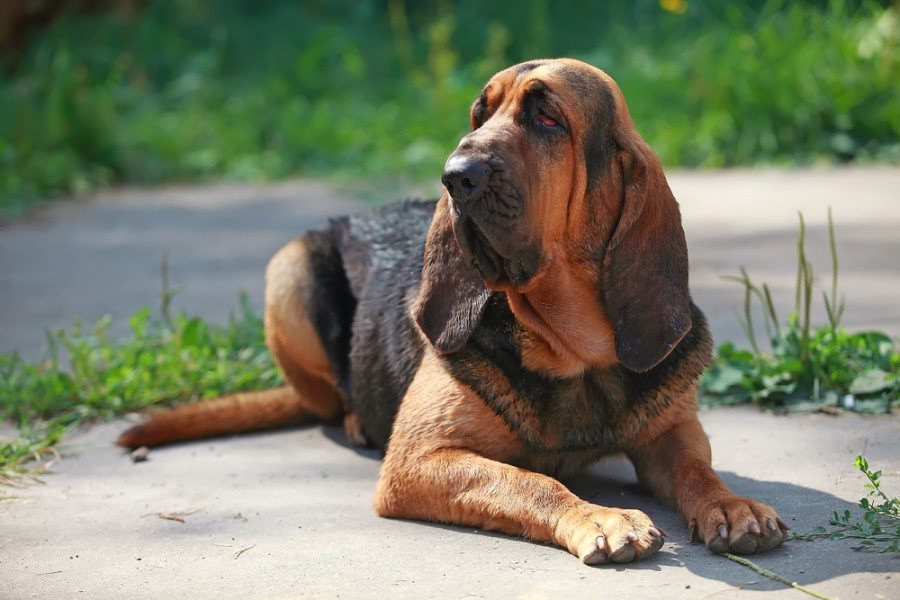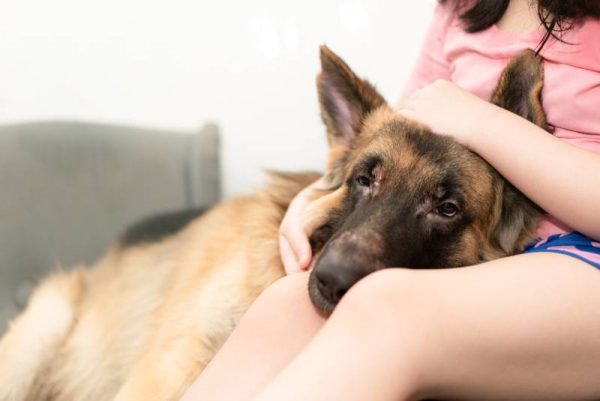In this article
View 2 More +Dogs are known for their excellent sense of smell, but few breeds can stand up to the might of the Bloodhound’s nose. Bloodhounds have over 300 million scent receptors, giving them one of the keenest olfactory senses among dogs. In fact, their sense of smell is so reliable that their discoveries are permissible evidence in courts of law. Keep reading below to learn more about the full capabilities of the Bloodhound’s nose.

Understanding the Capabilities of the Bloodhound’s Nose
Bloodhounds have such powerful noses that they are occasionally called “noses with dogs attached.” To put this into context, Bloodhounds have 40 times the number of olfactory cells as humans, with a scenting ability that is 1,000 times better. So, if you can smell something, you know a Bloodhound can smell it, too—only better!
Even among dogs, the Bloodhound’s abilities stand out. Their olfactory area is among the largest of all dog breeds. It far exceeds most other scent dogs due to its sophisticated, highly sensitive scent membranes.
The Bloodhound’s build and physical appearance also contribute to its excellent scenting ability. The loose, drooping ears that scrape along the floor can kick up scent particles from the air, making it easier for a Bloodhound to bring them into its nose. Likewise, its wrinkled skin traps the scent particles. As for the Bloodhound’s strong shoulders, they help the dog to keep its nose to the ground for prolonged periods without tiring.

How Far Can a Bloodhound Smell?
Bloodhounds have been used for tracking for a long time due to their excellent scenting abilities. When given a sample of a scent, they can create a profile of the scent using smells from sweat vapor, skin, and even breath. As soon as a trail is found, the Bloodhound will not quit until the subject is found or the trail ends. The Bloodhound’s ability is so great that this dog can follow a scent for over 130 miles.
How Long After the Subject Is Gone Can a Bloodhound Still Detect a Scent?
No matter how sophisticated our technology grows, we have still not managed to create a tool that can beat the Bloodhound’s capabilities. Not only can this dog smell even the faintest of scents and follow the trail for miles on end, but it can also follow a scent trail over 300 hours old.

History of the Bloodhound
How exactly did the Bloodhound develop such a keen sense of smell? This dog’s origins are hazy, but it is believed that it was first bred around the Mediterranean during ancient times. Around this time, there are records of a dedicated scenting hound that could not be pulled from its work until it found its mark. This description closely resembles the Bloodhound we know and love today. However, Bloodhounds, as we recognize them today, were extensively developed in western Europe.
The Bloodhound has had centuries to perfect its powerful nose. It is no wonder that the dog is practically unrivaled when it comes to following a scent trail.

Fun Facts About the Bloodhound
- Bloodhounds are huge! This dog can reach around 28 inches tall and weigh up to 120 pounds. While some dog breeds are larger, there aren’t many!
- One special Bloodhound became Hollywood famous. His name was Stretch, but the character he played was named Duke. He was an adorable canine character on the 1960s sitcom The Beverly Hillbillies. Duke was a lazy dog, but in reality, Stretch was very active.
- Bloodhounds are incredibly affectionate, gentle, and mild-mannered. This makes them an ideal companion for families with small children.
- Plenty of Disney movies feature Bloodhounds as beloved characters. Some of these include Copper from The Fox and the Hound, Trusty in Lady and the Tramp, and Towser from 101 Dalmatians.

Conclusion
Bloodhounds are incredible animals with some of the most powerful noses on the planet. They can smell much more than humans could ever dream of. Even compared to other dogs, they are outstanding. They have been instrumental in detective work and hunting, and to this day, they remain one of the most reliable scent detectors at our disposal.
- See also: Canine Malassezia-Pachydermatis
Featured Image Credit: markfizzwig, Pixabay


















